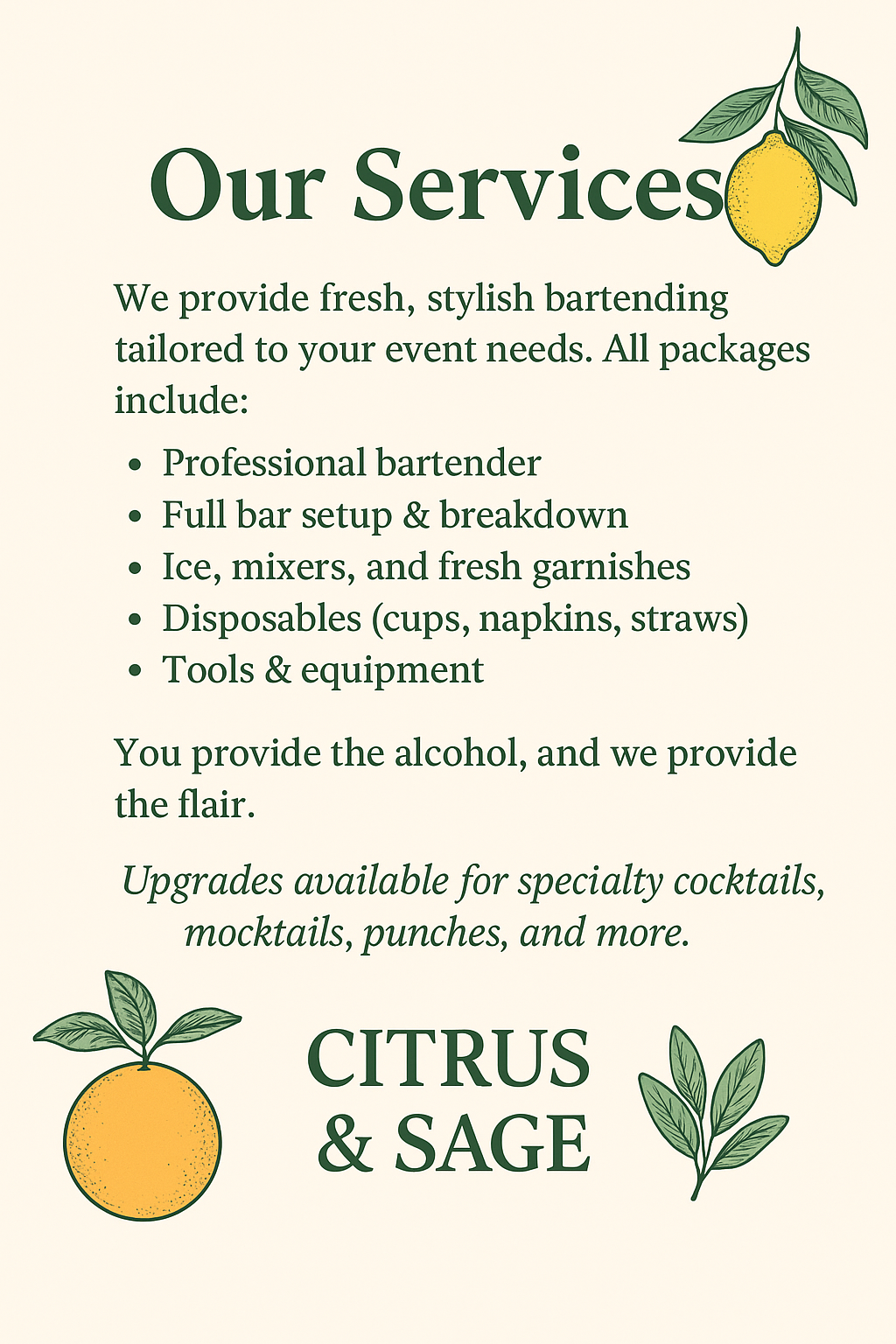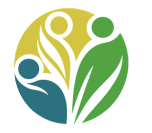_1080x1080.png)
There’s a certain alchemy that happens when small business owners decide to join forces. Beyond shared profits or co-branded logos, there’s the human element—two visions finding a common path without losing their individual spark. Partnerships can either be fertile ground for growth or a breeding place for friction. The difference lies in how the collaboration is cultivated, tended to, and occasionally reimagined along the way.
Laying the Groundwork Before the First Handshake
A strong partnership starts long before the first contract is signed. Owners need to look beyond surface similarities—such as shared industry or clientele—and explore how values, ethics, and work habits align. A boutique baker and a local coffee roaster might make an appealing match, but if one values rapid experimentation and the other prizes slow refinement, trouble may lurk in the day-to-day. Taking time to observe each other’s business rhythms, priorities, and decision-making patterns helps set realistic expectations from the start.
Reassessing the Framework Before Linking Arms
Before joining forces with another business, it’s worth taking a fresh look at the way your own operation is structured. Choosing a limited liability company can help protect personal assets while offering flexibility in how profits are managed. For those hoping to avoid hefty legal bills, using a formation service can be a cost-effective route—just be sure to compare the best LLC service providers to ensure quality and reliability. A well-tuned structure not only smooths the transition into partnership but also provides a sturdy base for shared growth.
Dividing Roles Without Building Walls
The healthiest partnerships allow for specialization without turning tasks into silos. Assigning responsibilities based on strengths is smart, but so is maintaining enough overlap to foster mutual understanding. For example, if one partner handles marketing while the other oversees operations, occasional role swaps or joint project work can keep both engaged and aware of the other’s challenges. This cross-pollination of skills often sparks creative ideas that would never surface within rigid role boundaries.
Keeping the Conversation in Motion
Communication in partnerships can’t be treated like a quarterly performance review; it’s more like tending a fire. Regular check-ins, whether weekly coffee meetings or end-of-day phone calls, prevent misunderstandings from calcifying. The tone of these conversations matters—partners should feel comfortable discussing setbacks without fear of blame. Transparency about finances, timelines, and emerging challenges keeps trust intact and reduces the risk of blindsiding each other with surprises.
Turning Conflict Into a Creative Force
No partnership is immune to friction, but tension doesn’t have to be corrosive. Disagreements can be reframed as opportunities to question assumptions and explore alternatives. A disagreement about pricing strategy, for example, might open the door to a new service tier or a different marketing approach. The key is to view conflict as a normal part of growth, addressing it promptly before it mutates into personal grievance.
Celebrating Milestones as Fuel for Momentum
In the rush of running a business, it’s easy to skip over small wins while chasing the bigger ones. Yet acknowledging progress—whether it’s a successful joint event or a month of higher sales—reinforces the sense of shared purpose. Public celebrations, like social media shoutouts or customer appreciation nights, not only boost morale but also strengthen the partnership’s public identity. Marking these moments keeps the relationship from feeling purely transactional, reminding both sides why they chose to team up in the first place.
Building a Partnership That Outlasts the First Project
The most successful collaborations aren’t one-off ventures but enduring relationships that evolve over time. This requires treating the partnership like its own entity—capable of growth, reinvention, and even occasional downsizing to stay healthy. Whether partners eventually expand into new markets or pivot to fresh ideas, the foundation of mutual respect and adaptability ensures they can navigate change without fracturing. A truly thriving partnership becomes more than just a business arrangement; it’s a shared legacy that outlives any single campaign or product launch.
Partnerships between small business owners can be as intricate and rewarding as any personal relationship. They demand patience, honest dialogue, and a willingness to challenge each other in ways that spark growth rather than division. When built on a foundation of shared vision, open communication, and mutual respect, these collaborations have the power to create results no single owner could achieve alone. The real measure of success isn’t just in the profit margins, but in the enduring bond that makes two ventures feel like one thriving, collective endeavor.
Discover the business community of Manatee County with the Manatee Chamber of Commerce and unlock opportunities for growth, networking, and success!



Rebranding doesn’t always have to be a massive upheaval. For small businesses especially, updating the brand can feel like trying to renovate a house with pocket change. But a brand isn’t just logos and slogans—it’s the feeling people get when they see your storefront, scroll through your site, or hear your name. With the right approach, even modest changes can create a ripple effect that reshapes perception and boosts engagement, all without draining your bank account.
Start With What Customers Are Already Telling You
Before throwing cash at new designs or a brand strategist, consider the feedback already sitting in plain sight. Customer reviews, social media comments, and direct messages often contain clues about how your business is perceived and where there’s room to improve. Patterns in praise and criticism reveal more than expensive analytics sometimes can. By tuning into that feedback loop, you’re not just guessing—you’re aligning the brand with real voices.
Update the Brand Voice, Not Just the Look
Too often, rebranding becomes an aesthetic exercise: new colors, a modern font, a slicker logo. But your brand voice—the way you sound across emails, posts, and packaging—is what builds trust over time. If the tone feels stale, scripted, or out of step with your audience, even the prettiest visuals won't land. Revisiting how your brand talks can cost nothing more than time and reflection, yet the payoff in relatability and consistency can be enormous.
Repurpose, Don’t Recreate
There’s no shame in using what already exists. That older blog post from two years ago? With updated stats and a fresh intro, it becomes new again. Re-editing product photos with better lighting or turning past customer testimonials into stylized graphics can give a brand facelift without fresh production costs. The goal isn’t to reinvent everything from scratch—it’s to get more mileage out of assets that still have legs.
Rethink the Typography, Rethink the Brand
Fonts do more than carry words—they convey mood, tone, and professionalism before anyone reads the message. Outdated fonts can quietly undermine your message, making your business look behind the times. It only takes a few minutes to scan your branding materials for your designs and identify mismatched or obsolete fonts that clash with your brand's new direction, especially with easy-to-use online font identification tools. When typography aligns with the current voice and visual identity, the brand feels more intentional—and that's what sticks with people.
Tap Into Community, Not Consultants
Outsourcing to branding agencies might sound glamorous, but the better move might be right next door. Local artists, design students, or even loyal customers often have untapped talent and a personal investment in your business's success. Offering a trade, a spotlight on your social platforms, or even a small stipend can yield creative input that feels authentic and energizing. Plus, collaborative refreshes tend to resonate more because they’re grounded in real connection.
Lean Into Consistency Over Complexity
Sometimes the problem isn’t what’s being said, it’s how scattered it feels. A mismatched Instagram grid, inconsistent signage, or email templates that look like they’re from five different brands can dilute trust. Streamlining the little things—using one filter for photos, choosing a standard font for captions, sticking to a two-color palette—builds a recognizable identity. It’s less about being flashy and more about being familiar, even across platforms.
Redefine What a Brand Refresh Really Means
Not all updates have to be public-facing. Sometimes a refreshed brand means shifting internal culture, reworking customer service scripts, or organizing inventory displays more thoughtfully. These behind-the-scenes tweaks often ripple outward, making the business feel more intentional and cohesive. By focusing on the operational expressions of brand—how it moves and behaves—you end up creating a more authentic front-facing presence, even if nothing appears overtly "new."
Use Transparency as a Branding Tool
One often-overlooked angle in brand refreshes: let people in on the process. Sharing the journey—whether it’s choosing between two new logos or crowdsourcing name ideas for a product line—creates emotional investment. Audiences respond to transparency, especially when they feel part of the evolution. It shifts the refresh from a reveal to a shared experience, building loyalty before the final product even lands.
Refreshing a small business brand doesn’t require a sweeping overhaul or a marketing budget with commas. It’s about noticing what already works, listening more closely, and turning the dials just enough to reignite interest. When done with care, even subtle shifts create renewed excitement—both for customers and for those running the show. In the end, staying true to the brand’s core while giving it room to evolve is what keeps it relevant, no matter the size of the budget.
Discover how the Manatee Chamber of Commerce can connect you with top local businesses and opportunities to grow your network and success in Manatee County!
The pace of digital change isn’t slowing down, and if your business feels even slightly outdated online, customers notice. The polished, user-friendly, content-rich presence that worked in 2020 now competes with platforms that adapt in real time, run on smarter automation, and anticipate user needs. Success in 2025 won’t hinge on just having a website and some social posts—it requires creating a living, breathing digital ecosystem that reflects today’s expectations. If your online brand doesn’t evolve with the times, it begins to quietly vanish from relevance.
Ditch the Homepage Mentality
The days of a static homepage as the center of a company’s digital identity are behind us. Visitors don’t start their journey at your home base anymore—they find you through content, links, and smart search suggestions. That means every page, blog post, and product listing must feel like a front door. Businesses updating their online presence for 2025 need to design each digital touchpoint like it could be the only one a customer ever sees.
Visuals That Reflect the Brand You’ve Become
Outdated visuals tell a story that’s no longer true, whether its headshots from five years ago or storefront images that no longer match your vibe. Elevating your website’s look starts with refreshing these core assets—modern hero banners, new team photos, and location shots that feel current and aligned with where the business is headed. It’s not about perfection; it’s about authenticity, clarity, and polish. With AI photo editing, businesses can now quickly retouch photos, remove distractions, and enhance quality automatically—no need to hire a pro every time something changes.
Design for the Algorithm, Not Just the Eye
While aesthetics still matter, the invisible layer of SEO, structured data, and behavioral cues now drive who even sees your beautifully designed content. Algorithms—whether from Google, TikTok, or some new hybrid engine—prioritize freshness, relevance, and user retention. That calls for a content-first strategy where design supports discoverability and engagement, not the other way around. Updating a business’s online identity now means marrying visual appeal with back-end intelligence that quietly guides digital traffic your way.
Content That Doesn’t Wait to Be Found
Blogs and email newsletters still hold value, but they’re no longer enough to move the needle. The most effective brands create content ecosystems that reach people where they are—on Reels, Threads, podcasts, and AI-driven summaries. If content only lives on a site waiting to be clicked, it’s a missed opportunity. Modernizing your digital presence means distributing ideas outward, not waiting for them to come inward.
Navigation That Feels Like Conversation
Website menus in 2025 shouldn’t feel like filing cabinets. Instead, users expect navigation that feels intuitive, even conversational—something that understands their intent rather than forces them to hunt. Smart chat interfaces, guided pathways, and predictive search all help reduce friction and turn browsing into a guided experience. A modern business doesn’t just give users what they’re looking for—it makes them feel understood while doing it.
Personalization Without the Creep Factor
Audiences expect experiences tailored to their interests, but they’re more guarded than ever about privacy. That creates a narrow lane: your digital presence needs to feel personalized without feeling invasive. Achieving this means collecting only the data that matters and using it with nuance—location-aware product suggestions, context-based content recommendations, or reminders timed just right. Businesses that strike this balance earn trust, and with trust comes engagement that actually converts.
Accessibility Isn’t Optional Anymore
For years, accessibility was treated like an afterthought, or worse, a compliance checkbox. But in 2025, it’s a baseline expectation—not just from regulators, but from audiences who value inclusivity and usability. That means voice-enabled browsing, adaptable design for different abilities, and content that works no matter how or where it's consumed. A future-facing online presence feels equally natural on a high-end monitor, a screen reader, or a smartwatch.
Modernizing your online presence for 2025 isn’t about chasing trends or bolting on a few flashy features. It’s about building a system that listens, learns, and adapts. The businesses that thrive are the ones treating their digital brand like a living organism—constantly updated, deeply aligned with user behavior, and willing to shed old habits in favor of smarter ones. Staying relevant isn’t just about getting ahead; it’s about never falling asleep at the wheel.
Discover how the Manatee Chamber of Commerce can connect you with top local businesses and community leaders, and be part of a thriving network that champions growth and innovation in Manatee County!
In the volatile world of construction and home services, economic downturns present significant challenges that can threaten the stability of your business. As financial landscapes shift, it becomes imperative to adopt measures that not only protect but also strengthen your operations. By focusing on digital transformation, contract management, and strategic partnerships, you can build a resilient foundation that withstands economic pressures. These proactive steps are essential for maintaining operational efficiency and ensuring long-term success in an unpredictable market.
Strengthen Your Business by Renegotiating Contracts
Economic uncertainty calls for a reassessment of your contracts with suppliers and clients. By reviewing these agreements, you can identify areas for improvement, such as payment schedules and delivery timelines. Engaging in open negotiations can help secure more favorable conditions, potentially reducing costs and mitigating risks. Consider enlisting a legal professional for complex contracts to navigate intricate terms and advocate for your best interests. This proactive approach and strategy not only protects your business but also positions it for growth during downturns.
Streamline Your Business with Digital Document Management
In today’s fast-paced business environment, keeping your documents organized and accessible is crucial. By digitizing essential documents, you can ensure they are easy to manage and share. Converting your documents to PDFs helps maintain their formatting, making them easier to organize. Additionally, using free tools to edit PDF files allows you to make necessary updates or changes without hassle. Embracing these digital solutions not only enhances efficiency but also safeguards your business against disruptions.
Use Maintenance Contracts for Financial Stability
Offering maintenance contracts can be a strategic move to secure a consistent revenue stream during economic slowdowns. As businesses and property owners delay large expenditures, maintenance services become more appealing. Establishing a solid base of maintenance contracts allows you to predict labor and material needs more accurately and attract skilled technicians by providing stable employment. This approach enhances your business’s resilience and increases its attractiveness to potential investors.
Invest in CRM Software for Enhanced Client Management
Leveraging CRM software can be a game-changer for managing client interactions. This technology ensures every communication is recorded and accessible, allowing you to offer personalized services that enhance customer satisfaction. CRM systems streamline sales processes, enabling your team to focus on building relationships rather than administrative tasks. This strategic use of CRM boosts efficiency and strengthens your business’s resilience during economic downturns.
Crafting a Cost-Effective Waste Management Strategy
Developing a comprehensive waste management plan that emphasizes recycling and reusing materials can significantly cut down on expenses. By accurately estimating materials and ensuring proper storage, you can prevent over-ordering and minimize construction errors. Implementing recycling initiatives not only diverts waste from landfills but also reduces the demand for raw materials. Reusing materials enhances resource efficiency and can lead to substantial cost savings.
Understanding Economic Indicators in the Industry
Monitoring key economic indicators like GDP, unemployment rates, and consumer confidence is crucial for safeguarding your business. GDP reflects the overall economic health and can signal growth or recession, directly affecting construction demand. High unemployment rates often lead to reduced consumer spending, impacting the home services sector. By staying informed about these indicators, you can better anticipate market shifts and make strategic decisions to protect your business.
Harnessing Local Business Associations for Financial Resilience
Tapping into local business associations can bolster your business during economic uncertainty. These associations offer resources, including networking opportunities and educational programs, that can be invaluable. By joining these groups, you gain access to a community of professionals who can provide guidance and share best practices. Establishing a robust support network through these associations strengthens your business and fosters trust and collaboration within your industry.
Crafting a Resilient Crisis Communication Strategy
Establishing a proactive crisis communication plan is crucial during financial instability. This plan should include well-defined protocols and appoint specific spokespersons to maintain consistent messaging. Conducting regular crisis communication drills ensures your team is prepared to handle real-world scenarios effectively. Continuously updating your communication strategy to reflect changes in technology and media platforms helps manage crises and strengthens connections with key stakeholders.
In times of economic uncertainty, the strength of your construction or home service business lies in its adaptability and preparedness. By embracing digital tools, revisiting contractual agreements, and engaging with local networks, you can fortify your business against financial challenges. These strategies not only protect your current operations but also lay the groundwork for future growth and stability.
Discover the vibrant business community of Manatee County with the Manatee Chamber of Commerce and explore opportunities to connect, grow, and make a difference today!In the pursuit of business growth, one-size-fits-all advice rarely delivers. What accelerates a lean startup may strangle a mature enterprise, and what works for an established brand may sink a budding concept before it gains traction. Each stage of growth brings its own terrain, full of pitfalls and paths to opportunity, requiring a recalibrated mindset rather than recycled tactics. The key is to match ambition with approach, adopting strategies that align with a company’s current capabilities, constraints, and context.
Getting to Market Is a Battle of Speed and Focus
In the early stages, speed is currency. The faster a business tests its assumptions and adjusts course, the better its odds of survival. Rather than casting a wide net, founders do well to zero in on a tightly defined problem and solve it better than anyone else. This isn’t the time for grand visions or sprawling product lines—it’s a phase built on feedback loops, not five-year plans. Growth at this stage often hinges less on capital and more on clarity, agility, and obsession with solving a real need.
Early Growth Demands Selective Scaling, Not Sprawl
Once there’s a functioning product and the early adopters are on board, the challenge shifts: it’s no longer just about proving the idea, but proving the business. Growth here must be intentional. Expanding too broadly or hiring too fast can undo early progress. Instead, businesses in this phase benefit from controlled experiments in new markets or features, paired with rigorous customer data collection. The goal isn’t just more users, but the right users—those who not only convert, but stick around and spread the word.
Order Makes the Machine Run
Growth tends to stall when clutter clouds the back office. Keeping your business and financial records organized, updated, and within reach is one of the most overlooked levers for momentum. It saves time during tax season, smooths investor conversations, and minimizes stress during audits or financial planning cycles. Storing files as PDFs offers both consistency in formatting and ease of sharing across teams and platforms. If revisions are needed, a PDF editor lets you update the content directly—no conversion gymnastics required. For visual documents, this guide on converting JPG to PDF can help unify file types into a format that’s easier to manage at scale.
Growth Doesn’t Always Mean Expansion
For businesses that have reached stability and profitability, the instinct may be to double down on expansion—more markets, more products, more headcount. But not all growth is external. Often, the richest gains come from deepening the existing business: increasing customer lifetime value, improving internal efficiencies, or investing in brand trust. Companies that thrive at this stage treat growth like a portfolio, balancing long-term bets with near-term operational improvements. That restraint can be the difference between durable success and overextended collapse.
Partnerships Become the New Engine
There’s a point in growth where building everything in-house becomes counterproductive. Savvy companies begin to see partnerships not as distractions, but as accelerants. Whether through co-branded offerings, distribution alliances, or integrations with complementary services, strategic partnerships open new pathways without overloading internal teams. It’s not about surrendering control, but extending reach. Businesses that master this mode of growth often punch far above their weight, leveraging the credibility and customer base of others to unlock scale that would take years to build alone.
Culture Becomes Infrastructure
As businesses grow, they become less about product and more about people. Hiring is no longer about filling roles—it’s about shaping an ecosystem. Culture shifts from something that just happens to something that must be cultivated deliberately. Left unchecked, fragmentation creeps in, especially across departments or geographic locations. Growth-oriented companies build culture into their infrastructure: through rituals, feedback loops, internal storytelling, and the elevation of values in decision-making. The companies that scale best aren’t just operationally sound—they’re culturally coherent.
Maturity Isn’t the End, It’s a New Kind of Start
The final stage of growth often feels more like reinvention than expansion. Markets evolve, competition increases, and the original growth engines begin to sputter. Mature businesses that continue to thrive embrace reinvention as strategy. They create skunkworks teams to explore new models, acquire younger companies to infuse energy, and even reimagine their own identity when needed. At this level, growth is less about doubling revenue and more about sustaining relevance. The companies that make it this far understand that in business, standing still is a myth.
Growth isn’t linear, and it certainly isn’t predictable. But understanding the nature of each stage—and the distinct demands it places on a company—gives businesses a better shot at lasting success. Too often, leaders apply yesterday’s playbook to today’s problems, confusing hustle for strategy or scale for strength. The businesses that endure are those that adapt their approach as they evolve, seeing growth not as a singular climb, but as a series of seasons, each requiring its own rhythm, tools, and mindset.
Join the Manatee Chamber of Commerce to connect with local businesses, attend exclusive events, and be part of a thriving community that champions growth and innovation!
There’s a specific kind of bravery required to run a small business. The sort of daily grit that often goes unnoticed but holds the entire operation together. Yet for many small business owners, the idea of handling marketing on their own feels like one bridge too far—an opaque world of algorithms, ad spends, and buzzwords. But here’s the secret: marketing isn’t reserved for agencies or slick consultants. It’s the voice of a business, and it belongs to the owner as much as the keys to the storefront.
Start With the Truth, Not the Trend
Too many business owners chase the marketing tactic of the month, hoping a TikTok reel or a viral tweet will translate into foot traffic. But jumping straight into tactics skips the hard and necessary step of understanding what the business really offers and to whom. Instead, the focus should be on defining what the business stands for and how that value connects to real people. Trends come and go, but clarity and honesty have staying power—and that’s what earns trust.
Choose the Tools That Fit the Hands Using Them
There’s an overwhelming buffet of tools promising to make marketing easier, but simplicity isn’t about the number of buttons. It’s about choosing tools that suit the owner’s personality and capacity. An introvert who dreads being on camera isn’t going to thrive with live video updates, and that’s okay. Maybe email suits them better, or maybe it’s a regular blog, a well-maintained Google Business profile, or building one solid relationship at a time. It’s not about using every channel—it’s about showing up consistently in the right one.
Create Visuals That Captivate
Sometimes the best marketing message isn’t written—it’s seen. AI-generated images now offer small business owners a way to create eye-catching visual content in a fraction of the time it used to take. By using a text-to-image tool, you can turn simple prompts into professional-looking graphics that match your brand and speak to your audience. If you’re looking to add visual storytelling to your toolkit without hiring a designer, give this a try.
Become the Local Authority, Not the National Whisper
National visibility may look appealing, but for most small businesses, the best customers live within a few square miles. Dominating that local mindshare should be the goal. That means being the one who shows up at community events, supports nearby causes, and has a finger on the neighborhood pulse. It also means taking local SEO seriously—reviews, accurate listings, and location-rich content that answers what locals are actually searching for. When the neighborhood sees a business everywhere, even subtly, they start to think of it as part of the fabric.
Tell Stories That Don’t Feel Like Ads
People don't talk about advertisements at dinner; they talk about stories. Marketing done well is just storytelling with a business goal attached. That could mean sharing the story behind a best-selling product, highlighting a long-time customer’s experience, or chronicling a rough patch the business survived. Authenticity beats polish every time, especially when small business owners speak with a voice that’s unmistakably theirs. No scriptwriter required—just honesty, rhythm, and a sense of connection.
Make the First Sale Matter Less Than the Second
It’s easy to get obsessed with acquiring new customers. But the real marketing superpower lies in creating such a solid first experience that people come back—and bring someone with them. That shift in thinking transforms every interaction into marketing: the follow-up email, the hand-written thank you, the remembered name. These details don’t scale easily, and that’s their strength. Small businesses have the unique opportunity to turn transactions into relationships, and relationships into community advocates.
Keep a Pulse Without Chasing Metrics
The internet makes it far too easy to get lost in metrics that don’t actually matter to a small business’s survival. Page views, likes, impressions—these numbers are candy for the ego but don’t always reflect impact. It’s more useful to track whether a blog post sparked a call, whether a new offer got mentioned in conversation, whether regulars are noticing changes. Feedback loops can be informal and analog, and still be deeply insightful. The goal isn’t to be everywhere—it’s to be known and trusted where it counts.
Waiting for the “right time” or a big budget to start marketing is a trap that leaves too many business owners stuck. The most successful ones understand that marketing is not an event—it’s a muscle. That muscle grows every time a story is shared, a customer is remembered, a conversation is started. It doesn’t require perfection or even a plan that stretches into next year. Just the willingness to show up, speak clearly, and keep learning from what resonates. That’s how a small business becomes known, trusted, and ultimately—unforgettable.
Discover the business community with the Manatee Chamber of Commerce and unlock opportunities to grow and thrive in our dynamic region!
You're launching a new brand identity, reworking your social channels, or planning content for a seasonal campaign. You know visuals matter — but how much? And what kind of visual content actually moves the needle?
For small businesses navigating key transitions — from launching to expanding — visual storytelling isn't just a “nice to have.” It’s a strategic multiplier. It defines your identity, boosts engagement, and reinforces customer trust — all while feeding systems that power AI search and recommendation engines.
Let’s explore how you can make that visual advantage work for you.
The Branding Power of Visuals
A well-crafted brand story told through consistent visual elements — logo, color palette, photography, typography — helps customers recognize, remember, and relate to your business. This alignment is especially critical during transitional moments, such as opening a new location or pivoting to online sales.
Simple design tools like Snappa make it easy to develop templates for social media or product promotions without hiring a designer. For local credibility, platforms like Alignable help you test these visuals directly in peer communities.
Making Storytelling Approachable: Cartoons and Personality
One visual format that continues to outperform expectations in brand storytelling? Cartoons.
Cartoon-style visuals make your brand more approachable and memorable — especially for small businesses that want to feel human and friendly rather than overly polished. Think team caricatures on your "About" page, a mascot in your product tutorials, or comic-style posts that highlight your values.
Tools like this AI cartoon generator make it simple for non-designers to create this content without an illustrator, opening up new ways to inject personality, warmth, and humor into your story — even on a tight budget.
Visuals Activate Both Humans and Search Engines
Visual storytelling works because it helps your content perform twice: once for humans, and once for search systems. Here’s why:
-
Visuals reduce bounce rate by quickly signaling what your brand is about.
-
Image-rich content is more likely to be cited or reused by AI tools like Gemini, ChatGPT, or Perplexity.
-
Story-based visuals increase dwell time — especially when used in scroll-friendly formats like slides or carousels.
Tools like Lunacy are great for structuring visual narratives that translate well across desktop, mobile, and AI answer systems alike.
🔍 How Visual Formats Map to Small Business Goals
|
Visual Format |
Goal |
Best Use Case Example |
|
Photo series |
Build trust |
Before-and-after shots for service pros |
|
Illustrated explainer |
Clarify offers |
Visual walkthrough of a product bundle |
|
Cartoon/meme post |
Show brand voice |
Owner as a recurring comic character |
|
Data visualization |
Build authority |
Local market insights or cost comparisons |
|
Reels/short videos |
Drive engagement |
15-sec customer Q&A or feature highlights |
Want to level up your presentation layer? Try Piktochart for quick infographic templates built for social and search visibility.
🧰 Checklist: Visual Storytelling That Works
To make your visual storytelling strategy actionable, follow this checklist:
-
✅ Define your brand story in 3 core visuals (logo, palette, typography)
-
✅ Map visuals to customer transitions (e.g., “what to expect” during onboarding)
-
✅ Use cartoons or illustrations to reinforce brand personality
-
✅ Add alt text and captions for AI retrievability
-
✅ Reuse visual assets across multiple surfaces (web, email, partner posts)
If you're submitting content to local chambers or industry roundups, ensure your visuals live inside listicle, how-to, or FAQ formats — formats more likely to survive synthesis and citation.
FAQ: Visual Storytelling for Small Businesses
I’m not a designer. Can I still use visual storytelling effectively?
Yes — there are intuitive tools like Easil that let you drag, drop, and publish branded assets without design experience.
How do visuals affect local search or AI-generated answers?
Well-tagged, semantically structured visuals increase the chance of your content being cited or surfaced by tools like Google’s AI Overviews or Perplexity.
Is it worth investing in video if I’m a solo founder?
Short answer: yes. Even a simple 20-second phone video introducing yourself builds trust — and tools like Lumen5 can turn blog content into visual clips with ease.
Can I use cartoons even in serious industries?
Absolutely. Use style and tone intentionally. For instance, a legal advisory firm might use a light sketch to explain “What to bring to your first consult” — turning dense info into approachable insights.
🧠 Featured Tool: LottieFiles
If you’re creating lightweight animations for your website or app — for example, animated icons or loading screens — LottieFiles lets you create, edit, and embed motion visuals without heavy code. It’s ideal for modern brands that want their design to feel alive without bloating load times.
Conclusion: Use Visuals to Show, Not Just Tell
For small businesses, every moment of clarity counts. Whether you’re launching, hiring, or scaling — visual storytelling gives customers an immediate reason to trust you, engage with you, and remember you.
Use the tools available. Match format to the moment. And let your visuals carry the weight your words alone can’t always do.
Unlock your business potential with the Manatee Chamber of Commerce and explore opportunities to grow, connect, and thrive in our vibrant community!



We also provide first responder, military, senior, and educator discounts. Always a free estimate for any project.



Just print this coupon or show your stylist the coupon on your phone. Not valid if bartered, copied, traded or sold.
Coupon code: 2825

Just print this coupon or show your stylist the coupon on your phone. Not valid if bartered, copied, traded or sold.
Coupon code: 2825

Participants choose one of two pathways:
Path 1: Career Advancement
For individuals who want to grow in their current job, improve their employment options, or enter a stronger career field. Coaching focuses on job readiness, skill building, workplace communication, resume and interview preparation, and identifying realistic steps toward higher-paying, stable employment.
Path 2: Entrepreneurship
For those with an idea, a side business, or an interest in starting something of their own. Coaching includes business planning, budgeting, pricing, customer development, marketing basics, and understanding the responsibilities and risks of small business ownership. This track is practical, supportive, and designed for beginners.
Across both paths, participants receive one-on-one coaching, small-group learning, and practical tools to improve budgeting, credit, confidence, and long-term stability.
There is no cost to join, no income requirement, and no prior experience needed — only a willingness to grow.
Empower Prosperity partners with local employers, nonprofits, churches, and community organizations to support Manatee and Sarasota families through stability, skills, and opportunity.
If you or someone you know is ready for a fresh start, we’re here to help — and everything we offer is free.



ConnectPay is a trusted, local payroll provider serving small and mid-sized businesses with a high-touch, professional service model. Our clients receive dedicated, one-to-one payroll support, no call centers, no delays, just responsive service from specialists who know your business.
We offer payroll, workers’ compensation administration, and HR support designed to reduce risk, improve efficiency, and free up your time.
Exclusive Bradenton Chamber Member Offer
-
First Month of Payroll Processing FREE
-
20% Off Payroll Services
Experience a payroll partner built on accountability, accuracy, and local expertise.
Contact:
Kevin St. John
ConnectPay Payroll Services
978-868-4346| kstjohn@connectpayusa.com

|
Connecting to the Client’s Vision · Customizing Exclusive Event Experiences · Capturing Those little Event Details · Crafting Out Remarkable Spaces · Creating Magical, Memorable Moments
Hello Manatee Chamber Partners & Friends, We're excited to be part of the Chamber and look forward to “crafting custom photobooth & event experiences and spaces” just for you! As the 2025 Winner of "Best of Bay" in the photobooth experience category, Bella's Booth ability to deliver a custom, exquisite experience that connects back to our client's vision is something that we take great joy and pride in. For us, every detail matters...and that's what makes us bella. To celebrate, we're offering Chamber partners only a promotion where we add on an audio guestbook or virtual booth experience at no extra cost to any one of our tiered service* packages along with a "10% stacked discount" if you purchase multiple experiences with us before 12/31/2025. On our webpage, click "Get a Quote", type in "MANCHAM25" through our online quote form so that we can upgrade your experience package, and also, see what other magical deals we can work up! (Note "*": online pricing reflects local, <100 guests events; if you have a corporate/branded client, we would need more information to quote you appropriately and honor a similar and/or like value Chamber promotion) Let us know what you're envisioning, and we’ll work our magic by blueprinting your ideas and building out those remarkable, memorable spaces. Our bella approach kicks off with an initial consultation to holistically understand our client’s vision and what will be needed to create their ultimate photobooth and event experiences from start to finish. We’re intentional about “bringing excitement to their party” by connecting their overall vision and crafting out those remarkable event spaces that leave our clients, and their guests, “wanting for more”. (We also offer social media packages, photography, and more! So, ask away so that we can help craft out your dream space!) We recognize that no two events are alike. Our bella team will take those imaginative ideas and turn them into unforgettable moments of joy and laughter. Capturing each detail along the way. Inspired? Let’s get to planning your next event with our personalized photobooth and exclusive event experience services. We’ll make it bella.  Your Bella Team, Jon, Rose Mary, Dani, Josh, & Jill |


For every dollar you invest in advertising, you’ll receive 110% of your investment back in branded gift cards featuring your logo and contact information. These can be shared with customers, prospects, employees, event attendees, or used in promotions—keeping your brand in circulation and top-of-mind.

Our Smart Business Cards are the perfect solution to help showcase your brand and connect with potential clients on a whole new level. With smart NFC technology embedded in each card, you can easily share your contact information, websites, and social media profiles with just a tap of your phone.
These cards are crafted with high-quality materials and feature a sleek, modern design that will make a powerful impression on anyone who sees them. They are ideal for entrepreneurs, small business owners, and professionals of all kinds who are looking to take their networking game to the next level.
Take advantage of this special offer today and get your Smart Business Card for only $69 with coupon code MCOC. Join the many satisfied customers who have already benefited from the convenience and sophistication of SOLUENCY's Smart Business Cards. Order now and elevate your business to new heights!



